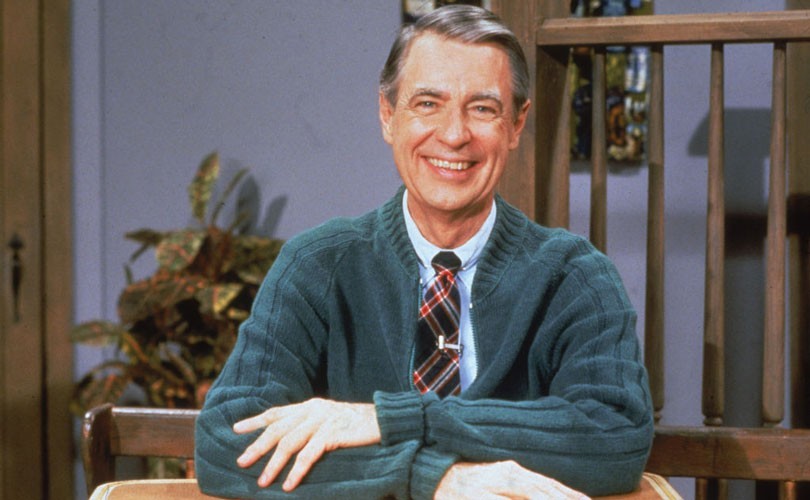“I Like You Just the Way You Are”: 4 Lessons from Mister Rogers About Building a Strong Company Culture
Fred Rogers, a beloved pioneer of U.S. children’s television and the long-time host of his celebrated show, Mister Rogers’ Neighborhood, had red-green color blindness. He couldn’t distinguish his blazing red cardigan sweater from his go-to green one.
But while he couldn’t distinguish the colors of some of his famed zip-ups, he was acutely aware that people came in all sorts of colors and he embraced people of all races and religions, all ages and abilities. Mister Rogers’ Neighborhood featured François Clemmons, the first African American actor with a recurring role on a children’s TV show. And, over the years, Mister Rogers’s guests included a rainbow coalition of the celebrated and the little known.
With his mantras of “there’s no person in the whole world just like you” and “I like you just the way you are,” Fred Rogers was a champion of what more than one writer has called “radical acceptance.”
With the release of It’s a Beautiful Day in the Neighborhood, a feature film starring Oscar-winner Tom Hanks as the beloved TV host, there’s renewed interest in what Mister Rogers had to say about children and kindness. There should also be attention paid to what he had to say, indirectly, about business.
Here are four vital lessons from Mister Rogers on building a robust company culture:
1. Foster inclusion and belonging by celebrating people’s differences
In many ways, Mister Rogers was decades ahead of his time with his message of accepting and celebrating people for who they are rather than who you want them to be — “I like you just the way you are.”
Mister Rogers was an ordained Presbyterian minister, but he didn’t just preach radical acceptance. He practiced it. “Fred was intentional about the atmosphere he created on the program as well as on the set,” wrote Jeanne Marie Laskas, who worked at WQED with Mister Rogers, in a recent profile in The New York Times. “If you could provide an environment that allowed people to be comfortable enough to be, simply, who they are, what would happen? . . . This idea of accepting a person, a child, or anyone as is was a novel concept to me.”
––––––––––––––––––––––––––––––––––––––––––––––––––––––––––––––––
Related: Gold Medal–Winning Paralympian Shares 5 Tips for Creating a More Inclusive Workplace
––––––––––––––––––––––––––––––––––––––––––––––––––––––––––––––––
But this kind of acceptance allows people to feel psychologically safe and to tap into their best selves, driving performance and engagement. When you’re part of a team that values your opinion and your work, you speak up and contribute more.
In an article for the Harvard Business Review, Pat Wadors, then LinkedIn’s head of HR, noted a number of ways to foster a culture of belonging. She suggested introducing colleagues as whole persons, beyond their roles and responsibilities, and sharing stories and encouraging others to share their own.
2. Promote curiosity about the lived experiences of others
For inclusion and belonging to really take hold in an organization, employees — from the top all the way down — have to understand and appreciate what the workplace looks like for others. Uzo Akotaobi is the VP of HR, diversity and inclusion, and learning and development at Prologis, and he encourages employees to have an “insane curiosity” about the lived experiences of others.
In a conversation with Brendan Browne, LinkedIn’s head of global talent acquisition, Uzo says: “To understand that difference, that creates the bridge of empathy.”
Mister Rogers gives a master class in this kind of “insane curiosity” in an episode with Jeff Erlanger, a 10-year-old boy who was confined to a wheelchair by a spinal tumor. Mister Rogers asks Jeff questions, gently but insistently, about his electric wheelchair, his medical condition, and his doctors. Jeff answers all of Mister Rogers questions, not only educating his host and the TV audience about his condition, but teaching everyone about how it’s possible to cope, gracefully and articulately, with a disability.
3. Build a culture that attracts and nurtures life-long learners
Mister Rogers was endlessly curious about the world around him — about how food and household goods were made, how art and music were made, how culture was shared, and how people felt. “I wonder how many stop-and-go lights there are in the world,” he said in one episode. “And I wonder if fish laugh. Or cry.”
He gave his young viewers some critical tools — a sense of wonder, unleashed curiosity, probing questions — with which to become life-long learners. Mister Rogers powerfully modeled all three of those things in all 895 episodes of his show. He was a patient, thoughtful questioner who also leapt at the chance to try new things — such as break dancing, juggling, or playing the tuba — no matter how much he might flub his initial attempt.
With business today operating at breakneck speed, companies need employees who are committed to life-long learning, from seeking out and adapting industry best practices to embracing and deploying emerging technologies. The innovations that will propel organizations forward will come from employees who ask the best questions.
If you want life-long learners, hire for curiosity. Curiosity leads to increased innovation, more candid communication, and better team performance, according to the Harvard Business Review. And questions are the telltale sign of curiosity, so as you listen to a job candidate’s answers, make sure to also take note of their questions.
4. Understand and accept that learning, innovation, and creativity all include making mistakes
Nearly every company says it craves innovation; many list it as one of their core values. Yet innovation, creativity, and learning and development cannot happen without mistakes, and many organizations have little tolerance for mistakes.
Mister Rogers understood that learning can be stifled by fear of making mistakes. In It’s a Beautiful Day in the Neighborhood, Tom Hanks is shown filming an episode of the children’s show in which he is putting up a tent in the side yard. Hanks struggles with the tent for over a minute, just as Mister Rogers did for an episode in 1975, before noting that maybe it’s really a two-person job and surrendering to his comic failure. In the film, the TV show’s producer suggests to Mister Rogers that they take a break and refilm the tent set-up. Mister Rogers, instead, insists on keeping the scene in so children can see that adults make mistakes too.
In one of his early black-and-white shows, before he had completely switched over to zip-up cardigans, Mister Rogers buttoned his sweater incorrectly at the beginning of the show. Rather than simply refilm the opening, he ad-libbed an explanation to children about how easy it is to make mistakes and how, in this case, you could go about fixing it.
A recent article in the Harvard Business Review suggests that instead of lambasting an employee who has made a mistake — “What were you thinking?” — take more a Mister Rogers approach and ask them, instead, what they’ve learned. It’s constructive, it’s empathetic, and it facilitates growth and development.
Final thoughts
Make no mistake, Mister Rogers aimed his show at small children. The pace, the tone, and the content were all developed with his young audience in mind.
Yet the success of the new film, as well as last year’s documentary, Won’t You Be My Neighbor?, is built largely upon Mister Rogers’s appeal to adults, who see in him the possibilities of a kinder, gentler world, where respect for every individual is freely given, regardless of background, viewpoint, or ability. Companies that show a similar respect for every person in their workforce will be able to better attract and retain their talent.
Can you say great employer brand?
To receive blog posts like this one straight in your inbox, subscribe to the blog newsletter.
* Image from Getty
Topics: Company culture Diversity
Related articles




